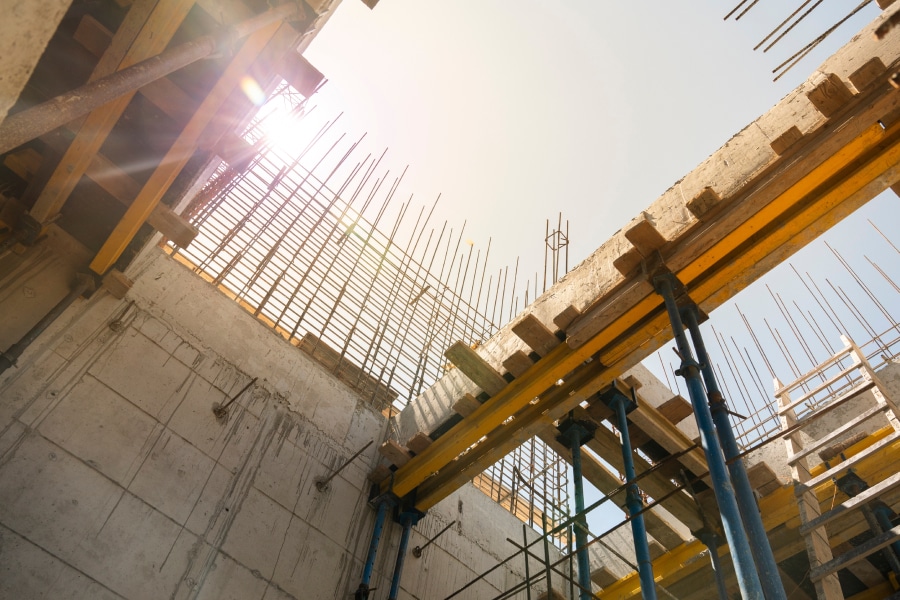Every year comes with its own set of economic opportunities and challenges in the construction sector. The companies that fare best over the long term are able to understand these forces and adapt their operations accordingly.
With 2023 already underway, it’s worth asking two related questions: First, what kinds of factors are poised to affect your building costs and expenses this year? And second, how can you build more efficient workflows that will help you stay efficient, both this year and beyond?
How will construction costs change in 2023?
The construction market is being pulled in multiple directions by several forces. Some factors impact construction companies’ budgets directly. These include the price of materials and supply chain disruptions. Others are more circuitous, but still important, such as higher lending costs leading to tighter financial conditions.
Taken together, it’s hard to paint 2023 as an easy or challenging market from a construction cost perspective. In some cases, contractors may find that certain types of jobs remain cost-efficient, while others are prohibitively expensive.
Cost balancing vs. demand shifts
The default state of the construction industry at the beginning of 2023 involves relatively high material costs and expenses. Forces such as inflation are having an impact on U.S. contractors’ prospects, according to the most recent ConsTrack360 databook on the industry.
The researchers did note, however, that over the course of 2023, general building costs for contractors are expected to decline. Contractors may also find that as the year progresses they’re taking on more federally funded infrastructure projects. Construction activity in sectors including residential construction and technology industry office space has been dampened by forces such as mortgage rate hikes, fears of a downturn and the same relatively high costs that troubled contractors at the end of 2022.
Elevated costs for materials and labor: A mixed outlook
While builders are anticipating cost pressures to continue, the current outlook has recovered somewhat from the previous year, according to another survey by Associated General Contractors of America (AGC) and Sage. For example, 73% of contractors (compared to 86% the year prior) expect to struggle with material costs as a major concern in 2023.
Contractors surveyed by AGC are slightly more concerned about labor costs in 2023 than in the prior year, as 63% cited it as a main concern this year compared to 58% in last year’s survey. Firms’ continuing struggle to find workers may end up driving costs higher in this area.
Beyond the immediate and direct expenses associated with labor and construction materials, construction leaders are keeping an eye on the macroeconomic picture. Nearly three-fourths of contractors are worried about the general financial impact of a potential recession or slowdown, with 73% listing this concern among their top priorities.
How do changing material costs impact construction?
When it comes to dealing with elevated costs for building materials, contractors have to face hard decisions. The immediate impact of higher material costs is shrinking profit margins, forcing firms to discover alternative responses to soften that blow as much as possible.
Some mitigation methods involve becoming more flexible. Increased material costs or delays associated with certain components could be caused by specific supply chain issues affecting particular suppliers. A report in “Construction Business Owner,” for instance, recommends that construction firms be more open to sourcing alternative construction materials and making substitutions.
There are also contractual ways for construction firms to protect themselves. Construction law firm Garcia & Milas recommend strengthening material price escalation clauses and force majeure clauses to make sure contractors will be compensated for sudden material price hikes in the middle of a job. While these legal maneuvers can’t target the root issues associated with higher costs and expenses, they can somewhat safeguard the bottom line.
Construction firms have another potential tool when working around unpredictable or elevated costs: technology. This helps in two ways: First, the use of automation allows employees to be more efficient, increasing the value of their time. Second, the insights provided by these tools can allow firms to work more effectively.
No matter how contractors aim to control their costs, technology should be part of the equation. This is because a suite of modern tools can deliver heightened performance regardless of market conditions. Put simply, becoming more automated is a natural evolution for builders.
What can a better takeoff process accomplish for companies?
One part of the construction process most prone to improvement through technology is the takeoff and estimation process. When contractors have a digital way to perform material takeoffs for each new construction project, the financial benefits can add up quickly.
Modern digital tools enable quick and accurate takeoffs by allowing users to quickly block out areas on a PDF plan document and estimate the necessary amount of any material. After making these estimates in the plan documents, employees can export the results directly into spreadsheets, proceeding efficiently with the bid process.
Truly high-quality takeoffs allow contractors to present accurate contracts that effectively reflect their material needs and related expenses. Especially in times of high material costs, these contracts can be vital for protecting the bottom line. A greater degree of accuracy helps every party at each step of the job, from the bid through completion.
A digital takeoff process also allows new construction project bids to proceed more cost-effectively in terms of office efficiency. When employees have effective digital takeoff tools, they can get more done in less time, putting together additional bids or performing other value-adding work. Freed from manual calculations, these workers are simultaneously lowering the risk of human error and putting time back in their days.
How can you run a more efficient construction business in 2023?
The construction benefits of technology don’t stop with takeoffs. Technology platforms that reach multiple areas of construction firms’ operations can deliver more effective workflows overall, equipping those firms to survive amid challenging economic environments.
Prices of essential building materials are still fluctuating through the early months of 2023, and experts say it may be some time before they stabilize. Industry news outlet “Construction Dive” cited forces ranging from weaker global lumber demand to supply chain breakdowns affecting sand and cement in an analysis of worldwide material cost trends. And with commodity prices also spiking, while others are leveling off, contractors need to be smart to keep track. Digital construction solutions represent the right tools at the right time for contractors to ensure their firms are a step ahead of the competition.











